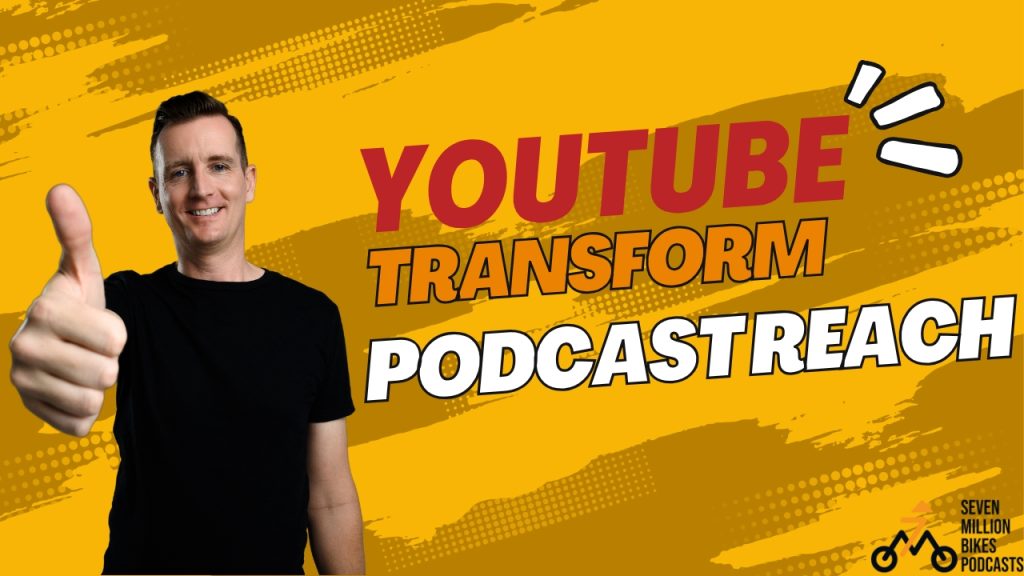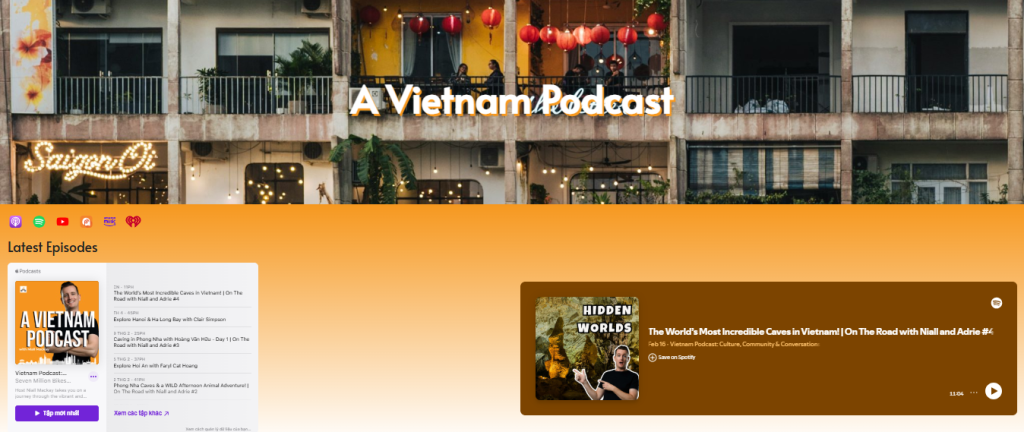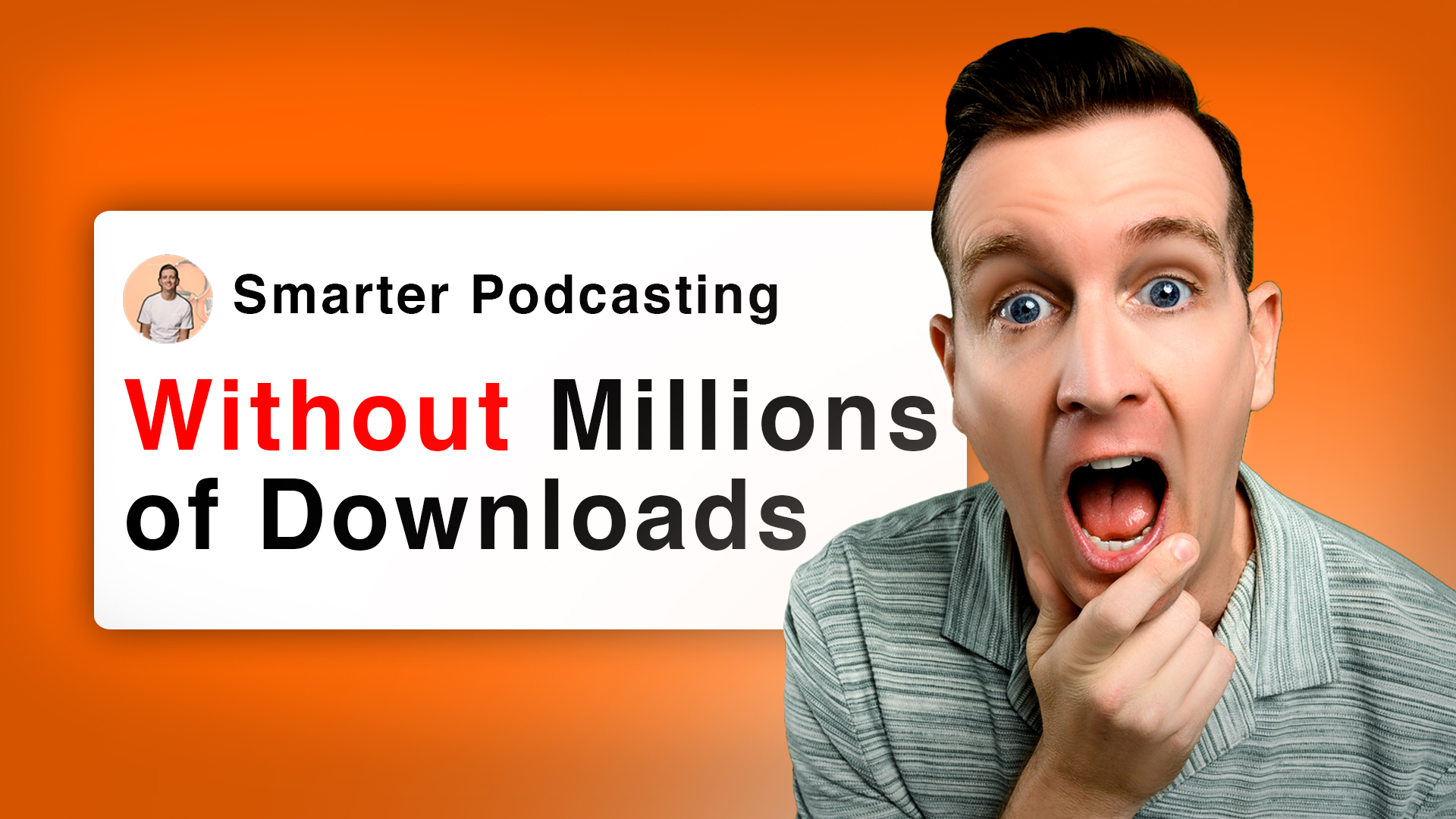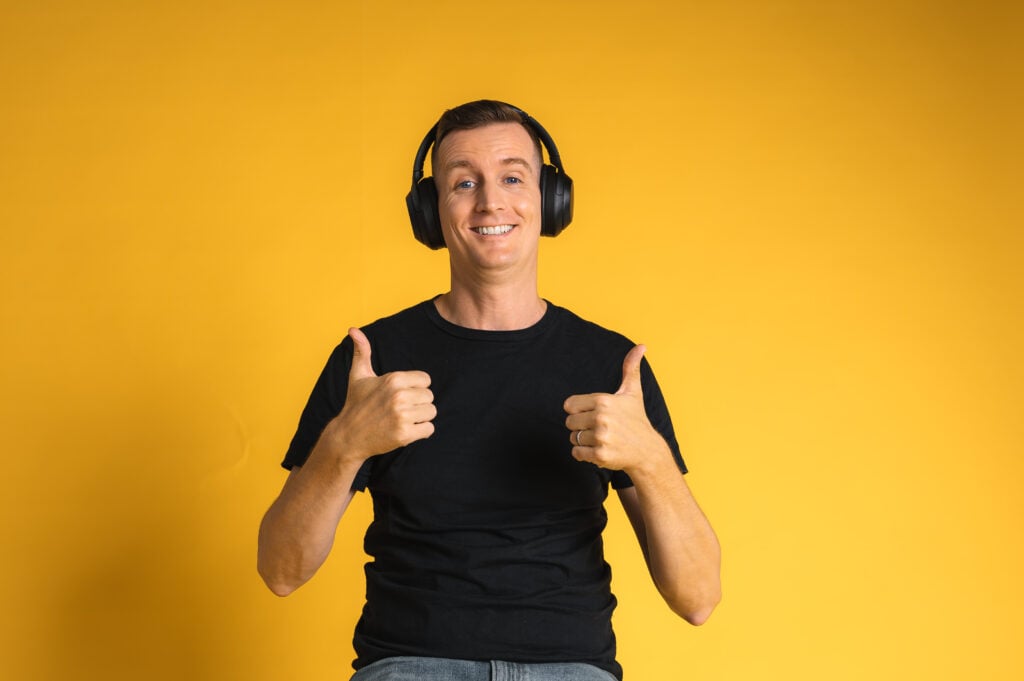This is Niall Mackay, founder of Seven Million Bikes Podcasts. I’ve launched Seven Million Bikes Podcasts, worked with over 50 podcasters, produced more than 700 episodes, and helped podcasts reach millions of downloads and climb the charts.
Today, I have something really exciting to share. For years, I’ve proudly said that A Vietnam Podcast ranked in the top 5% of podcasts worldwide. If you’ve ever felt stuck wondering how to grow your podcast, this post is for you.
Understanding Podcast Metrics: What Do Podcast Numbers Really Mean?
When I started podcasting, I had no clue what my download numbers meant. Like many beginners, I compared my numbers to big shows like The Joe Rogan Experience or professionally produced podcasts from The Guardian or Wondery. These shows rake in millions of downloads, have celebrity guests, and are backed by major production teams. But the reality is, that’s not how it works for most podcasters.
Breaking Down Podcast Download Numbers
Let’s talk real numbers. When I launched A Vietnam Podcast in May 2019, I got 202 downloads in my first two weeks. The next full month, I had 1,117 downloads—that’s roughly 250-300 downloads per week. At the time, I had no idea if that was good or bad.
Over the years, my downloads fluctuated—some months were better than others. Some months, I barely saw any growth. This is normal. But the game-changer for me was learning about global podcast stats.
What Makes a Podcast Successful?
The best source I found was Buzzsprout Global Stats, which gives insights into how many downloads put a podcast in the top percentages worldwide. Here’s what I discovered:
- To be in the top 50% of all podcasts, you only need 28 downloads in the first seven days of an episode release.
- To be in the top 10%, you need 469 downloads in the first seven days.
- The top 1% is reserved for the massive, celebrity-backed shows.
This changed my entire mindset. I realized that even having 28 people consistently listening every week is a big deal. Imagine giving a weekly presentation to a room of 28 people who genuinely care about what you have to say—that’s powerful!
How I Knew I Was in the Top 5%
Another useful tool is Listen Notes, which ranks podcasts globally. When I first checked, I saw that A Vietnam Podcast was in the top 10% of podcasts worldwide. That blew my mind.
Then, just recently, I checked again—and I had moved into the top 5% of podcasts globally! This was a huge confidence boost. Like many podcasters, I sometimes suffer from imposter syndrome. Am I really giving good advice? Do I know what I’m doing? Seeing this ranking confirmed that yes, I do.
Here’s one of the most important lessons I’ve learned: most podcasts don’t make it past 10 episodes. Many people start a podcast expecting thousands of downloads right away, and when that doesn’t happen, they quit.
Looking at my own numbers:
- It took me two years to reach 16,000 total downloads.
- By year four, I had 50,000 downloads.
- Now, nearly five years in, I’ve passed 70,000 downloads—and the numbers are growing faster than ever.
Podcasting takes time. Success doesn’t happen overnight, but if you stay consistent and keep publishing episodes, you’ll see steady growth.
Tip 1: Be Consistent (But Don’t Burn Yourself Out)
One of the biggest reasons podcasts fail is inconsistency. Many new podcasters start strong, but after a few episodes, they lose momentum. Maybe they don’t see instant success, or life gets busy, and suddenly, the podcast is on hold. Before they know it, weeks (or months) have passed, and the audience has moved on.
That’s why consistency is key—but that doesn’t mean you have to push yourself to exhaustion. I’ve been podcasting for almost five years, and one of the best decisions I made early on was using seasons.
Instead of feeling pressured to release an episode every single week forever, I decided to break my podcast into seasons. There’s no strict rule on how many episodes per season—I’ve done 12, 10, 8, and even just 5 episodes during lockdown when I was in quarantine.
It offers flexibility as you can:
- Take a break between seasons without feeling like you’re abandoning your podcast.
- Plan and produce episodes in batches rather than scrambling every week.
- Experiment with different formats, guests, or themes in each season.
If you decide to pause, here are some tips to keep your audience engaged:
- Announce your break in advance so listeners know when you’ll return.
- Release “Best of” episodes or highlight reels to keep content flowing.
- Use social media or email updates to stay connected with your audience.
When you’re actively releasing episodes, show up on the same day and time every week (or bi-weekly if that works better for you).
Related Post: How To Plan An Effective Strategy
Tip 2: Build a Back Catalog
If you’re serious about growing your podcast, you need to think long-term. One of the biggest factors in my success is my back catalog—the collection of episodes I’ve built up over the years.
Your older episodes aren’t just sitting there collecting dust. They’re still bringing in listeners—a lot of them. In fact, 30% of my downloads today come from past episodes.
This is why it’s so important to keep producing episodes, even when it feels like growth is slow. Every episode you release becomes part of your library—a piece of content that can keep bringing in new listeners long after you’ve published it.
To make the most of your back catalog, focus on evergreen content. Evergreen content is content that stays relevant over time. A podcast episode about “The Best Microphones for 2024” will feel outdated in a year, but an episode about “How to Choose the Right Microphone for Podcasting” will still be useful five years from now.
- Avoid too many references to specific dates or events (unless they’re historical or major industry shifts).
- Create episodes around timeless themes—for example, instead of “The Best Podcast Mics in 2024,” make “How to Choose the Right Microphone for Podcasting.”
- Update show notes if an episode needs minor tweaks to stay relevant.
A strong back catalog also helps new listeners binge your content. Think about when you find a new podcast you love—you don’t just listen to the latest episode. You go back and explore past episodes, diving into topics that interest you. The more episodes you have, the longer listeners stay engaged with your show.
If you’re feeling discouraged about slow growth, remember this: every episode you release is an investment in your podcast’s future.
Tip 3: Audio Quality is More Important Than Content
This might be a controversial take, but after working with over 50 podcasts and producing more than 700 episodes, I stand by this: audio quality matters more than content.
Now, that doesn’t mean you should ignore good storytelling or thoughtful discussions. But the truth is, no matter how great your content is, if your podcast sounds bad, people won’t stick around to hear it.
I’ve tried listening to podcasts that had amazing topics, but I couldn’t make it past the first minute because the audio quality was terrible. One that stands out was recorded using just an iPhone, placed between two people in a big, echoey room. The conversation itself was probably great, but the sound was so distracting that I just had to turn it off.
Here are some factors that can influence your audio quality:
- Equipment: Invest in a good microphone and headphones for clear sounds.
- The environment: Record in a quiet, small space with soft surfaces
- Editing process: Use software like Audacity, Adobe Audition, or Descript to clean up background noise, balance audio levels, and enhance clarity.

If you don’t have enough time and effort for the editing process, let Seven Million Bikes help you. Leave the heavy part for us and focus on creating quality content!
At the end of the day, podcast listeners are forgiving of a lot—background noise, minor mistakes, even an awkward pause here and there. But they won’t forgive bad audio. If your podcast is hard to listen to, they’ll simply move on to another one.
So before you stress about getting a big-name guest or perfecting your script, make sure your audio quality is top-notch. It’s one of the simplest yet most impactful ways to improve your podcast.
How To Sound Professionally: 12 Essential Podcast Recording Tips for Mastering the Airwaves
Tip 4: Make Your Podcast Discoverable
A great podcast is useless if no one can find it. If you want more listeners, you need to make your podcast easy to discover. And that doesn’t just mean putting keywords in your episode titles and descriptions.
A lot of people talk about SEO for podcasts, but honestly, most of that advice is misleading. Unlike blog posts, podcast episodes don’t often show up in Google search results. If you want to boost discoverability, you need to think beyond traditional SEO tactics and go where people are already looking: YouTube.
Why YouTube is Essential for Podcast Growth
I used to be skeptical about video podcasts, but I’ve completely changed my mind. YouTube is the second-largest search engine in the world (after Google), and when people search for something, YouTube videos often show up at the top of the results.
Here are some of my tips:
- At the very least, link your RSS feed to YouTube so episodes upload automatically.
- Even better, start recording video podcasts—people are more likely to watch than listen to a static image.
- Break episodes into short clips (30 seconds to a few minutes)—these get way more views than full-length episodes.

The Power of Video Podcasts
If you want to grow your audience, I recommend recording video podcasts. A simple video setup—just you in front of a camera—can make a huge difference.
I’ve tested this myself. When I Googled “Saigon Happy Hours,” my podcast episode on that topic was the #1 result on Google—above all the blogs and directories that list happy hour deals. Why? Because I had a YouTube video that ranked higher than any podcast episode ever could.
- Short Clips: Reels and Short
If you’re using video, don’t just upload full podcast episodes and hope for the best. People rarely sit down to watch a full hour-long conversation on YouTube unless it’s from a well-known creator. Instead, break your episodes into short clips—the way Joe Rogan does with JRE Clips.
These bite-sized clips (usually 30 seconds to a few minutes) are much more likely to be discovered, shared, and recommended by YouTube’s algorithm. I’ve seen podcast shorts get 10,000+ views even when the full episode only got a few hundred.
- Avoid using audiogram
If you’re not doing video yet, avoid wasting time on audiograms. I tested them, and they simply don’t get traction. Video is the future of podcasting, and if you want to grow, you need to be on YouTube.
Tip 5: Build a Website for Your Podcast
If you want long-term success with your podcast, you need to make it easy for people to find. While word of mouth is still the number one way people discover new podcasts, the second most important factor is having a website.
Your podcast website is your home base. It’s where listeners can learn more about your show, find all your episodes, and most importantly, where Google can recognize and rank your content.
- Better search rankings – Google is more likely to rank websites than individual podcast episodes.
- Easier discoverability – If someone searches for topics related to your podcast, they’ll find your site.
- A central hub for listeners – One place with all your episodes, links, and show notes.
- Control over your brand – You’re not just relying on Apple Podcasts, Spotify, or other platforms.
I saw this firsthand with A Vietnam Podcast. When I searched “Vietnam Podcast” on Google, my website appeared in the top five results—above bigger, more established platforms. That happened because I had a dedicated site optimized for search engines.

How to Build a Podcast Website That Works
1. Get a Domain Name
- Keep it simple and related to your podcast name.
- Example: AVietnamPodcast.com works better than a long, complicated URL.
- If the exact domain is expensive, consider alternatives like PodcastNameShow.com.
2. Use a Website Builder or Hosting Platform
- If you’re not a web developer, platforms like WordPress, Squarespace, or Wix make it easy to create a site.
- Some podcast hosts, like Buzzsprout and Podbean, also offer built-in website options.
3. Optimize for SEO (Search Engine Optimization)
- Create blog posts for each episode – Write summaries, key takeaways, and transcriptions to help Google rank your content.
- Use keywords naturally – Think about what people search for (e.g., “Best Vietnam Travel Podcast”) and include those terms.
- Embed podcast episodes – Don’t just link to Apple or Spotify—make it easy for people to listen right on your website.
4. Include Important Pages & Features
- Homepage – An overview of your podcast with a featured episode.
- Episodes Page – A list of all your podcast episodes with descriptions.
- About Page – Who you are, what your podcast is about, and why people should listen.
- Contact Page – A way for listeners, guests, or sponsors to reach you.
Before I had a dedicated website for A Vietnam Podcast, my show existed only on Apple, Spotify, and other platforms. While that worked, it wasn’t enough for long-term growth.
Once I launched AVietnamPodcast.com:
- My podcast ranked higher on Google for relevant searches.
- Listeners could easily find all my past episodes in one place.
- I had full control over how my podcast was presented online.
This strategy works beyond my podcast, too. For example, I did an episode comparing YouTubers vs. Podcasters, and when we searched that term later, my website ranked on the first page of Google—even ahead of some well-known podcasting sites. That’s the power of having a site that Google can recognize and index properly.
Conclusion
Looking back at my journey with A Vietnam Podcast, I can say with confidence that growth comes from doing the right things consistently. There were times I felt stuck, times I doubted whether my podcast was making an impact, and times I even took long breaks. But by sticking to the five key strategies, my podcast is now in the top 5% worldwide, with thousands of downloads each month.
If you need help with your podcast, feel free to reach out.


